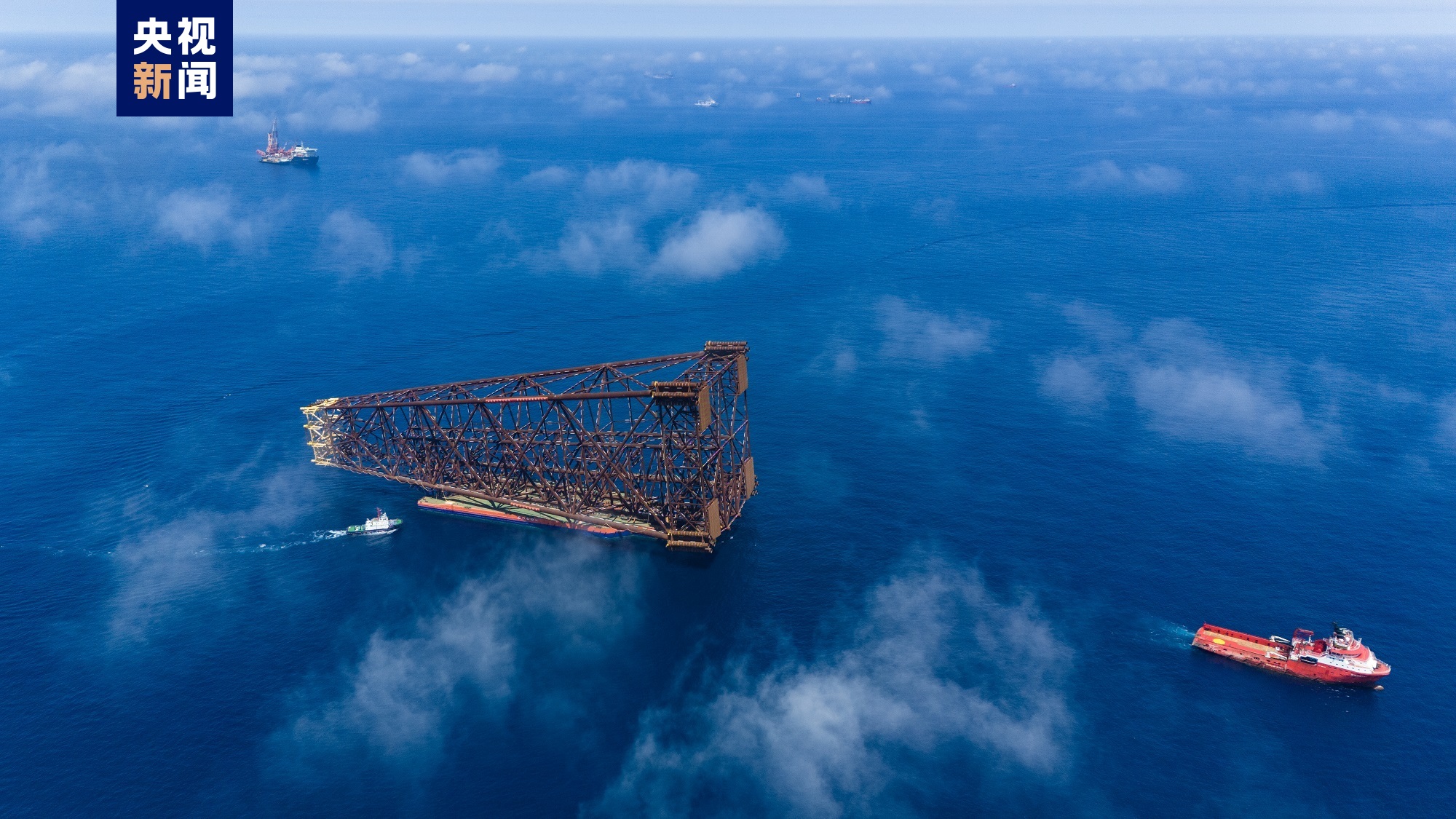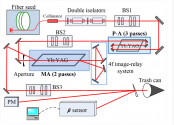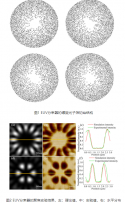XCMG's XCA40000 heavy crane used to install wind turbines. Huge, that they can produce this cheaply at home
You are using an out of date browser. It may not display this or other websites correctly.
You should upgrade or use an alternative browser.
You should upgrade or use an alternative browser.
News on China's scientific and technological development.
- Thread starter Quickie
- Start date
How long will it take for China to catch up to Nvidia in A.I chips?
supercat
Colonel
China-Indonesia joint scientific expedition sets Indonesia's highest diving record
China issued world's 1st type certificate for eVTOL with take-off weight of more than 1,000 kg
How long will it take for China to catch up to Nvidia in A.I chips?
Probably much sooner than what those people think.
antiterror13
Brigadier
How long will it take for China to catch up to Nvidia in A.I chips?
For design point of view, its very close .. see Biren or Kunpeng 930
The problem is not in design but the lithography. Nvidia can make the chips anywhere they want to, even on the cutting edge technology, but Chinese companies can't do that ..... China is handicapped by the sanctions, currently ... but in 5-10 years time, it will be over and the sanction is no longer have any impact to China
China’s homegrown deep-water jacket ‘Haiji No 2’ to be installed to help offshore oil, gas exploration ..

China's independently designed and constructed deep-water submarine jacket platform "Haiji No 2", which is believed to the largest of its kind in Asia, has broken multiple Asian records after entering service, China Media Group reported on Tuesday.
Citing the China National Offshore Oil Corp (CNOOC), its developer, the report said the deep-water jacket platform will be loaded onto a ship at the Gaolan Port in Zhuhai, South China's Guangdong Province, and be transported to the Pearl River Mouth Basin for offshore installation.
China is ramping up efforts to build mega infrastructure while improving innovation capabilities in a bid to ensure the country's energy security. With "Haiji No 2" installation, the country's offshore marine engineering is expected to achieve high-level technological self-reliance and improvement.
Acting as a "foundation" supporting fixed offshore oil and gas platform where seabed conditions are challenging, the deep-water jacket can provide support for pipelines, subsea structures of an offshore platform. The jacket is a widely used marine oil and gas development equipment in the world, according to the report.
Notably, it has set a record in terms of the height and weight of steel piles in Asia, with a total height of 338.5 meters and a total weight of 37,000 tons, and represents the first case in China's marine engineering to use domestically produced high-strength steel piles to build large-scale offshore oil and gas equipment.
Meanwhile, the construction of "Haiji No 2" has set records for operating at depth, and construction speed of such equipment in Asia reflects that China has become a top player in the world to build large deep-water jacket platforms, the CNOOC told the CMG.
The platform will be used for the development of the Liuhua 11-1 and Liuhua 4-1 offshore oil fields, in the deep waters of the South China Sea, media reported.
China has fast tracked deep-sea oil and gas exploration in the past decade. Its predecessor, "Haiji No 1" platform, which entered operation in 2022, marked the first time that China exploited offshore oil and gas employing such a model. It turned out to significantly bring down engineering cost and boost oil recovery and economic efficiency.
In 2021, the Shenhai Yihao, the world's first 100,000-ton deep-sea semi-submersible oil production and storage platform, was put into operation, signaling that China's offshore oil and gas exploration capacity had entered an advanced level.

China's independently designed and constructed deep-water submarine jacket platform "Haiji No 2", which is believed to the largest of its kind in Asia, has broken multiple Asian records after entering service, China Media Group reported on Tuesday.
Citing the China National Offshore Oil Corp (CNOOC), its developer, the report said the deep-water jacket platform will be loaded onto a ship at the Gaolan Port in Zhuhai, South China's Guangdong Province, and be transported to the Pearl River Mouth Basin for offshore installation.
China is ramping up efforts to build mega infrastructure while improving innovation capabilities in a bid to ensure the country's energy security. With "Haiji No 2" installation, the country's offshore marine engineering is expected to achieve high-level technological self-reliance and improvement.
Acting as a "foundation" supporting fixed offshore oil and gas platform where seabed conditions are challenging, the deep-water jacket can provide support for pipelines, subsea structures of an offshore platform. The jacket is a widely used marine oil and gas development equipment in the world, according to the report.
Notably, it has set a record in terms of the height and weight of steel piles in Asia, with a total height of 338.5 meters and a total weight of 37,000 tons, and represents the first case in China's marine engineering to use domestically produced high-strength steel piles to build large-scale offshore oil and gas equipment.
Meanwhile, the construction of "Haiji No 2" has set records for operating at depth, and construction speed of such equipment in Asia reflects that China has become a top player in the world to build large deep-water jacket platforms, the CNOOC told the CMG.
The platform will be used for the development of the Liuhua 11-1 and Liuhua 4-1 offshore oil fields, in the deep waters of the South China Sea, media reported.
China has fast tracked deep-sea oil and gas exploration in the past decade. Its predecessor, "Haiji No 1" platform, which entered operation in 2022, marked the first time that China exploited offshore oil and gas employing such a model. It turned out to significantly bring down engineering cost and boost oil recovery and economic efficiency.
In 2021, the Shenhai Yihao, the world's first 100,000-ton deep-sea semi-submersible oil production and storage platform, was put into operation, signaling that China's offshore oil and gas exploration capacity had entered an advanced level.
supercat
Colonel
Rubber-tired subway trains for Mexico City:
About 850 million, or half of China's mobile phone users have 5G. China will have 100% 5G coverage by the end of 2025, and is planning to commercialize 6G in 2030.
About 850 million, or half of China's mobile phone users have 5G. China will have 100% 5G coverage by the end of 2025, and is planning to commercialize 6G in 2030.
22 kW near-diffraction-limited Yb:YAG slab laser amplifier without adaptive optics correction.
Abstract
A high-power CW Yb:YAG slab laser amplifier with no adaptive optics correction has been experimentally established. At room temperature, the amplifier emits a power of 22 kW with an average beam quality (β) of less than 3 in 0.5 min. To our knowledge, this is the brightest slab laser without closed-loop adaptive optics demonstrated to date. In addition, an extracted power of 17 kW with an optical extraction efficiency of 33%, corresponding to a residual optical path difference of less than 0.5 µm, is achieved with the single Yb:YAG slab gain module. The slab gain module has the potential to be scalable to higher powers while maintaining good beam quality. This makes a high-power solid-state laser system simpler and more robust.

Shanghai Institute of Optics and Mechanics makes progress in EUV and soft X-ray beam splitters for the first time
Shanghai Institute of Optics and Mechanics makes progress in EUV and soft X- ray beam splitters for the first time
Recently, the team of Associate Researcher Zhang Junyong from the High Power Laser Physics Joint Laboratory of Shanghai Institute of Optics and Precision Mechanics, Chinese Academy of Sciences, and the research group of Professor Zhao Yongpeng from Harbin Institute of Technology completed the design and experimental verification of EUV and soft x- ray beam splitters for the first time. This research is promising Solve the problem of beam splitter limitation in diffraction imaging and interference sensing in extreme ultraviolet and x- ray bands. The relevant results were published in APL Photonics under the title " Azimuthally extreme‑ultraviolet focal splitter by modified spiral photon sieves" .
The concept of Fresnel zone plate was proposed by Fresnel in 1818 and was successfully applied to x- ray focusing in the 1960s . In 2001 , photon sieves with better focusing performance than zone plates appeared, and new device options were available for high-performance focusing of short wavelengths in addition to zone plates. However, traditional zone plates and photon sieves are limited by single-focus characteristics and cannot meet the technical needs of short-wave diffraction imaging and interference sensing. With the breakthrough of high-coherence short-wave light source technology, there is a demand for EUV and X- ray beam splitting devices. More and more urgent.
In order to solve the beam splitting problem of EUV and X -rays, the joint team used optimization algorithms to design an improved spiral photon sieve based on the previous research on Fermat spiral photon sieve, which realizes the angular beam splitting function in the EUV band. In the experiment, a 46.9nm laser was used to irradiate the photon sieve, a photoresist was used to record the focused light field, and an atomic force microscope read the data. Multiple groups of angular split beam spots focused at 100 nanometers were successfully obtained. The experimental results are consistent with the theoretical predictions. The emergence of EUV and X -ray beam splitters has expanded new development space for short-wave array lithography, "water window" band imaging of living biological cells, laser plasma interference diagnosis, X -ray microscopy and split-beam coherent diffraction imaging.

very serious breakthrough ..
Recently, a team led by Li Wanwan, a researcher at Shanghai Jiao Tong University School of Materials Science and Engineering and Zhangjiang Institute for Advanced Study, successfully developed a quantum dot liquid biochip multi-index in vitro detection system.
Liquid biochip technology is a new detection technology, suitable for nucleic acid and protein markers, with high detection throughput and sensitivity. It can analyze dozens of targets in a single tube sample at the same time, significantly improving detection efficiency. The core of this technology is special fluorescent polymer microspheres and corresponding signal analysis. It has high technical barriers, difficult manufacturing, and has been monopolized by foreign countries for a long time. It is a typical "stuck" problem in the field of in vitro diagnostics.
After 18 years, Li Wanwan's team has achieved technological breakthroughs in the entire chain from quantum dot fluorescent microspheres, detection analyzers to supporting detection reagents, and successfully created a quantum dot liquid biochip technology platform with independent intellectual property rights.
It is reported that Li Wanwan’s team was the first in the world to propose a membrane emulsification preparation strategy for quantum dot fluorescently encoded microspheres. After achieving a breakthrough in the preparation of core-encoded microspheres, based on the characteristic that quantum dot fluorescence encoding signals can be excited by the same excitation light, the team joined forces with enterprises and successfully independently developed the only fully automatic liquid biochip system in the world that uses single laser technology. The system has the advantages of small size, fully automatic, high throughput, small sample volume, high accuracy, good repeatability, wide linear range, and low cost. At the same time, based on this detection system, the research team developed multi-index detection reagents for a series of protein/nucleic acid detection reagents for cancer, autoimmune diseases, cardiovascular diseases, infectious diseases, etc.
At present, the series of detectors and supporting test kits have obtained EU CE certification and 15 Chinese NMPA medical device registration certificates. They have the ability to compete with similar foreign high-end technical equipment and are promoted and used globally, breaking the monopoly of large international companies.
Breaking the monopoly! This kind of chip is made domestically. Quantum dot Liquid Biochip
Recently, a team led by Li Wanwan, a researcher at Shanghai Jiao Tong University School of Materials Science and Engineering and Zhangjiang Institute for Advanced Study, successfully developed a quantum dot liquid biochip multi-index in vitro detection system.
Liquid biochip technology is a new detection technology, suitable for nucleic acid and protein markers, with high detection throughput and sensitivity. It can analyze dozens of targets in a single tube sample at the same time, significantly improving detection efficiency. The core of this technology is special fluorescent polymer microspheres and corresponding signal analysis. It has high technical barriers, difficult manufacturing, and has been monopolized by foreign countries for a long time. It is a typical "stuck" problem in the field of in vitro diagnostics.
After 18 years, Li Wanwan's team has achieved technological breakthroughs in the entire chain from quantum dot fluorescent microspheres, detection analyzers to supporting detection reagents, and successfully created a quantum dot liquid biochip technology platform with independent intellectual property rights.
It is reported that Li Wanwan’s team was the first in the world to propose a membrane emulsification preparation strategy for quantum dot fluorescently encoded microspheres. After achieving a breakthrough in the preparation of core-encoded microspheres, based on the characteristic that quantum dot fluorescence encoding signals can be excited by the same excitation light, the team joined forces with enterprises and successfully independently developed the only fully automatic liquid biochip system in the world that uses single laser technology. The system has the advantages of small size, fully automatic, high throughput, small sample volume, high accuracy, good repeatability, wide linear range, and low cost. At the same time, based on this detection system, the research team developed multi-index detection reagents for a series of protein/nucleic acid detection reagents for cancer, autoimmune diseases, cardiovascular diseases, infectious diseases, etc.
At present, the series of detectors and supporting test kits have obtained EU CE certification and 15 Chinese NMPA medical device registration certificates. They have the ability to compete with similar foreign high-end technical equipment and are promoted and used globally, breaking the monopoly of large international companies.
